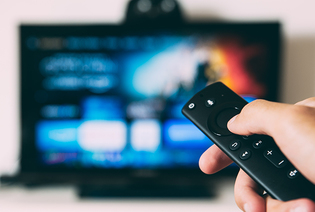
Glenn Carstens-Peters/Unsplash
Gone are the days when most Americans watched the same few television news broadcasts. Now, millions rely on highly partisan media outlets as their primary—often their only—source of information on current events. A working paper coauthored by Joshua Kalla ’14, ’14MA, assistant professor of political science, gives insight into the implications.
Kalla and his team divided 763 Fox News viewers into two groups. One group had 304 people, each of whom was paid $15 per hour to watch CNN instead of Fox. The other 459 didn’t change their viewing habits. In September 2020, the first group watched CNN for an average of 5.8 hours per week.
The researchers analyzed each network’s broadcasts. Some of the findings: CNN devoted much more time than Fox to the severity of the pandemic; Fox consistently downplayed the pandemic. CNN called mail-in voting largely secure; Fox called it highly vulnerable to fraud. Fox consistently implied that Joe Biden supported defunding the police.
Follow-up surveys showed measurable differences between the two groups. CNN watchers were 6 points more likely to believe other countries controlled the pandemic better than the US, 6 points less likely to believe Biden would end police funding, and 7 points more likely to support mail-in voting. They expressed more negativity about Donald Trump and more awareness of bias in Fox News. However, they did not shift partisan identification. While the later data are inconclusive, Kalla says, most viewers returned to Fox, and many of the effects of watching CNN appear to have dissipated.
“We need media to gather and transmit information,” Kalla notes. “Biased facts lead to a warped sense of reality.
 loading
loading